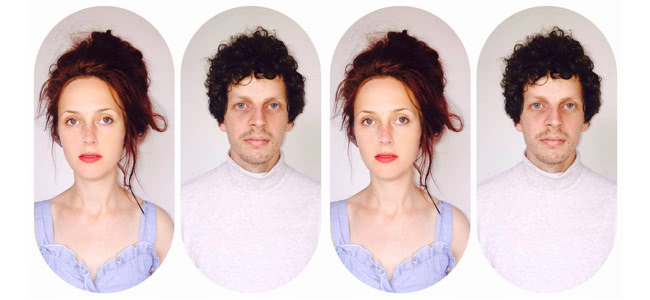Australian via Baltimore duo Inner Light have recently released the first in a series of releases paying compliment to 1970s provincial German electronica.
Featuring arrhythmic tape loops, extended guitar driven improvisation and modular
synthesizers overlaid by sparsely arranged minimal two part vocals, this effort from the duo aka Meredith McHugh and Christian J. Best is a fascinating textual journey into the band’s exploration of sounds, art and music.
Both core members of the krauty / drone outfit Smoke Bellow, it’s clear a musical DNA between the projects can be detected however according to the duo Pastoral Homage Vol. I serves as a counterpoint to Smoke Bellow’s calculated approach.
To celebrate its release and to get to know Inner light a little more intimately, the duo have curated a track by track run through of Pastoral Homage Vol. I which you can check out below. If you like what you’re hearing pop by Ehse Records Bandcamp page for more upcoming releases.
Cactus
This song is a straight tribute to a time when (almost) every one of our favourite artists from the 1970s German scene came together and made a record called Tracks and Traces by Harmonia and Eno. The Harmonia part of the group was comprised of Moebius and Roedelius from (maybe my favourite band ever) Cluster, and Michael Rother of NEU!
The Eno bit is Brian Eno of course, who is spoken about and highly lauded everywhere, so there’s not much more to say there. They made a record together in a farm house by a river in Forst, in 1976. We began this track in Baltimore during the winter of 2014/2015, which really felt like being holed up in a farm house with an open fire.
Eucalypt
This one is again a nod to a collaboration between another rural German group Faust with this time an American outsider Tony Conrad. Together, they made a recording in 1977 called Outside the Dream Syndicate, which is essentially two 26 minute electric violin drone pieces, underpinned by a repeated primitive pulse.
Their use of repetition is utterly transcendent. We began with the same basic elements a bass pulse, some simple percussion, textural elements provided by Meredith and an imitation violin made by a synthesiser. Vocals came later once the foundation had been built. The idea for this piece began in LA when we was travelling home to Australia via the west coast of the USA and noticed how Eucalypts were common in both places.
Spring
This one is different to the others in that it was not pre-composed at all. Meredith set up some great textural guitar loops in the studio which made a drum kit in the corner rattle with certain frequencies.
It very much sounds like the space we were in that day, experiencing the first warm weather in Sydney that we had felt after two consecutive winters in Baltimore and Melbourne. I remember wearing a Hawaiian shirt on this day.
Furry Computer
In this phase I was listening to a lot of Asmus Tietchens, who is another personality loosely linked with this time and place. I’m fascinated by Asmus because it seems to me like he views this period as more of a biographer or fan rather than a directly involved member.
In 1981 he released a record called Biotop which is absolutely immediate and futuristic. We were struck by his use of electronic and acoustic instruments, particularly on the track ‘Räuschlinge’. This one we named after a popular alias we use for our cat Spindles the “Furry Computer”.
Tidal Pool
This track pays respect to Hans Joachim Roedelius, a member of the aforementioned Cluster. Throughout the 70s he home recorded a series of releases titled ‘Selbstportrait’ that optimise the pastoral vibe to me experimental, playful, introspective and cosy.
Yabbie Road
This final track is a nod to Harmonia, who wrote by recording their improvisations and using the tape machine as more of an instrument then a passive device. I followed this lead by cueing up a series of synthesiser loops, as Meredith improvised all of those vast washes of guitar noise. This was recorded straight to tape in the studio, with a big credit to our producer/engineer Todd Dixon who balanced the cacophony in the mix.




































